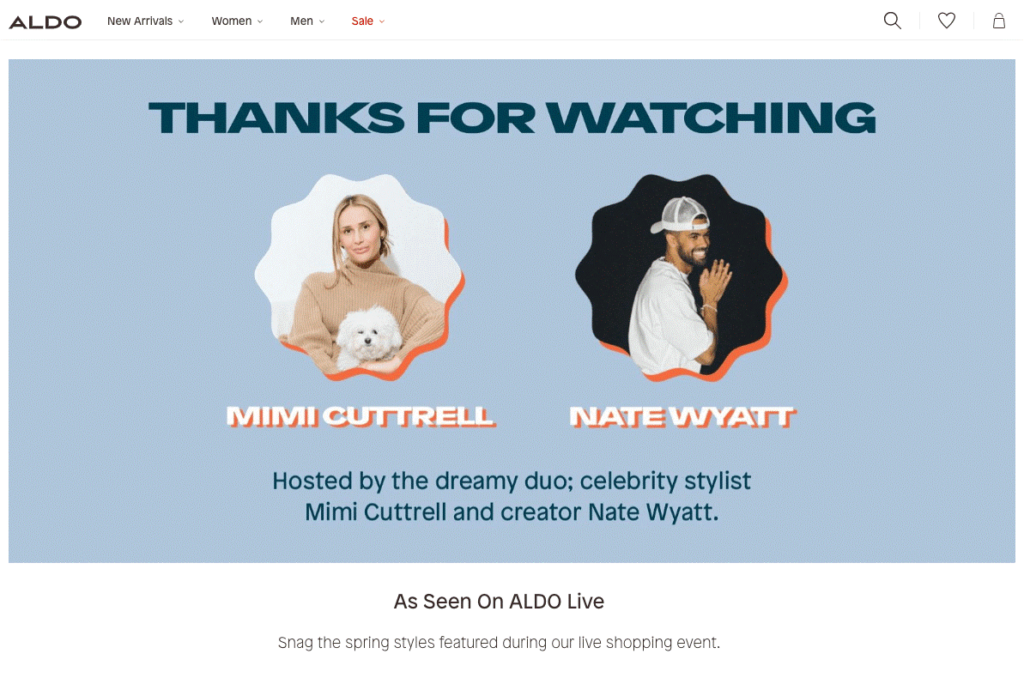The livestream shopping market is thought to be the next money-making playground.
We've seen how it's transformed China's ecommerce landscape, and we want to replicate that success for our own brands. When used properly, live shopping can be more than just a sales tool—it is a great tool for brand building.
In this article, I will outline the steps needed to build a successful brand using livestream shopping as a launchpad.
What Is Livestream Shopping?
As stated in a previous article, livestream shopping is an innovative and exciting strategy for rapidly increasing sales volume and brand exposure. It has elevated the Chinese online retail world since the pandemic.
Experts predicted that social commerce would skyrocket in the United States and the rest of the world soon, while major players such as ecommerce platforms (Amazon Live), social networks (TikTok), and major retailers, including Nordstrom, are pouring money into relevant features and tools. It is forecasted to reach a sizable revenue of $184.3 billion by 2027.

4 Reasons That Make Livestream Shopping an Excellent Brand-Building Strategy
Many brands have tested the concept with considerable success in the following four ways:
1. Livestream shopping generates high conversion rates
With all the actions—product demonstrations, entertainment, instant interactions—going on, brands can encourage quicker sales conversions, especially when checkout inside the experience is only a click away.
Attendees are compelled to make impulsive purchases out of fear of missing out due to the limited time and products available in a live session. (It’s not as bad as the Canadian real estate market, though.)
Video stream customers get a great deal instead of a bidding war because deep discounts are usually provided during these sessions.
2. Livestream shopping is cost-effective
Compared to other shopping channels, the cost of producing and broadcasting a live shopping event is extremely low. We can go live with basic equipment and ready-to-use social media platforms. And it's essentially free to promote the events and increase attendance by tapping into our existing social media audience and sharing the events via newsletters.
In live shopping events, a customer's journey from awareness to purchase is much shorter and more informed. As a result, returns are significantly reduced. According to one study, returns in live shopping events are 50% lower than in traditional online shopping. They all add up to lower sales costs for brands. And the money you save can be used to grow your brand through other channels.
3. Livestream shopping fosters community
Connecting with your customers and cultivating a sense of community are important aspects of livestream shopping. If you've ever watched a livestream event, you'll notice that the sellers demonstrate their products in great detail and in various ways and actively invite the viewers to participate.
A farmer goes live in an orchard, picks an orange from the tree, peels it, squeezes it, and takes a big bite to demonstrate how fresh and juicy the fruits are. A presenter gives a tutorial by applying lipstick on herself, her assistant, and the models to show how it looks on different skin tones.
Austin Li often brings his toy poodles to his sessions, where he lets them perform tricks to earn the dog snacks he sells. These sessions are extremely popular. Viewers react with heart emojis, leave comments, ask questions and make purchases for their own pets.

The experience livestream sessions offer is unique. The spectators feel they help create an immersive and engaging experience they are a part of.
4. Livestream shopping is great for brand distinction
As previously stated, live shopping is still relatively new in the Western market. The earlier you adopt the trend, the greater your first-mover advantage, which provides high brand recognition, customer loyalty, and increased sales from being among the first.
It provides another platform for storytelling, but better because of the real-time interactions. It gives your brand a personality, a face, and a voice to elevate you above the competition. It also consolidates your relationship with customers, who see how you embrace innovation to provide a better shopping experience.
Live shopping has also been shown to drive traffic to your website effectively. ALDO saw about 17,000 views on their website and a whopping 308% increase in engagement in the five days after their livestream pilot in 2021.

How to Create Your Own Livestream Shopping Brand Strategy in 5 Steps
The process of brainstorming, planning, creating, and delivering a livestream shopping session is exhausting and challenging but rewarding. Brands must understand the fundamentals and develop a clear strategy.
1. Select your platform(s)
Needless to say, there are far too many livestream shopping platforms to choose from. Brands must decide which works best for their business and target audience.
For starters, social media platforms are frequently used because of their low initial investment and large established audience. For effective campaigns, it is critical first to identify your audiences and demographics, their pain points, customer journey, and preferred platforms.
For example, LinkedIn is a better option than TikTok—where younger customers are more interested in lifestyle and beauty content—if you want to reach professionals or business owners.
Don't forget to look into the features provided by the platforms. YouTube Live has the added benefit of being searchable on YouTube and Google, which allows you to reach out to potential customers who have not yet followed you.
When you're ready to invest more, consider incorporating e-commerce sites with livestream features or even hiring a tech team to build your own platform from the ground up.
2. Form your team
There is no doubt that a host plays a key role here. Viewers often attend a live session because they already have a trusting relationship with the hosts, whether they are brand founders or influencers. However, it is equally important to assemble a capable team to achieve the best results.
A partner (or secondhand) for the host in a live show is always recommended. Their role is versatile, as they can serve as a moderator, an assistant, a model, a tester, and more. This role helps deepen communications to cultivate high-value loyal customers.
People working behind the scenes are important before, during, and after a live session. A director is in charge of the cameras, lighting, framing, and the overall operation of the recording. A manager who aids in the organization of the entire production—from preparation to rehearsals to presentations. And the tech team that supports and offers solutions when something goes wrong.
3. Pick your products
The selection of products to promote is one of the first steps a brand must take when developing a live commerce strategy. Make sure you do your homework on the platform, the market, and the potential customers attending your broadcast room.
Bestsellers are always a good place to start if you're new to all of this. Remember to concentrate on a few products rather than many.
4. Content, content, and more content
Live video shopping offers much more than just a shopping experience. In a 2019 interview, Alibaba founder Jack Ma stated that approximately 17 million Taobao Live viewers each night that year had made no purchase. They logged in solely for entertainment.
As a result, brands need to create high-quality, valuable, and enjoyable live experiences that enable them to share the right message at the right time with an audience primed to buy or watch. Repurposing and up-cycling your live video content is a great way to extend the shelf life of live content. To begin, immediately publish the replay of your live event so that latecomers and absentees can see everything that happened during your live event.
Share live clips on your product pages, which will greatly improve your customers' shopping experience and raise awareness.
Furthermore, repurpose short videos from live sessions on your social media channels. Don't forget to link it back to the replay so that viewers can get the whole experience and may consider attending your next event.
5. Track, measure, analyze, and improve
Live commerce insights can help businesses adjust their strategy and assess their shortcomings.
Looking at metrics like device viewership, duration of views, engagement level, and repeat traffic will give you insight into your level of success, identify areas in need of improvement, and open your eyes to new business possibilities.
Grow Your Brand Faster With Livestream Shopping
There’s never been a better time to jump on the livestream shopping opportunity to grow your brand.
Plan ahead but don’t be afraid to make mistakes. Like everything we do in business, we get better and stronger by actually doing it.
Livestream shopping is just one aspect of the ecommerce game. Subscribe to The Ecomm Manager’s newsletter to get more tools and tips to help you build a successful ecommerce business.


